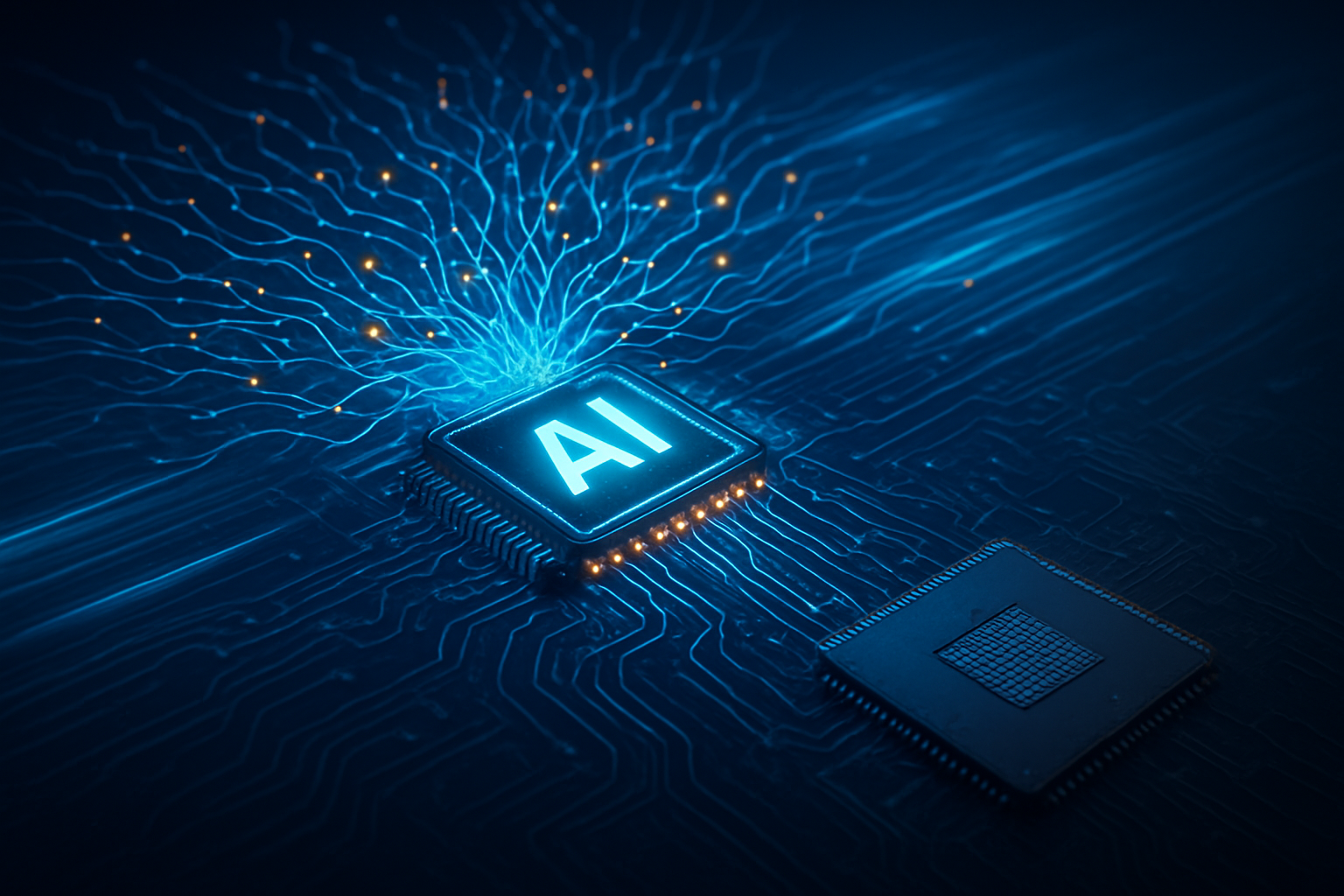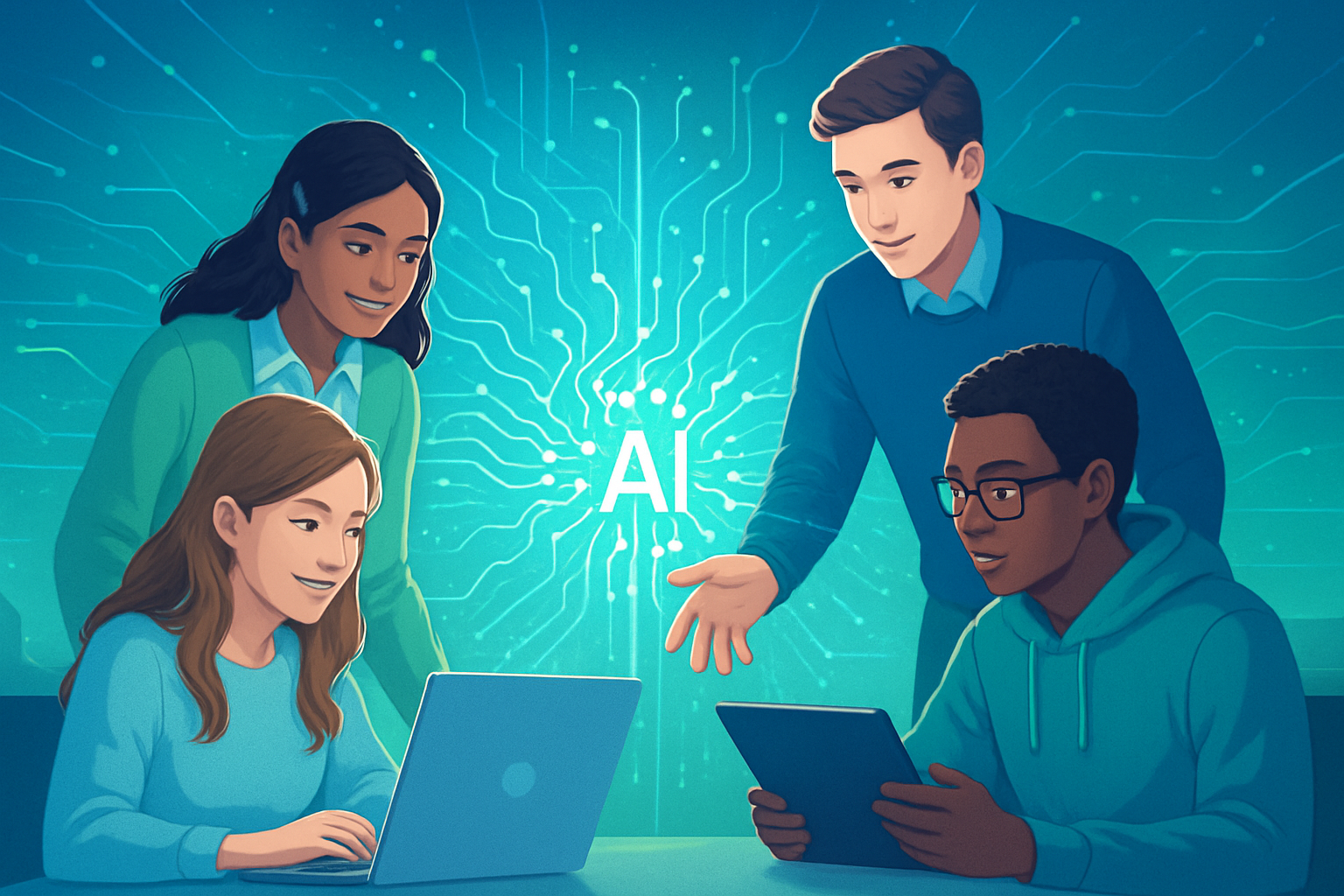Shanghai, China – November 17, 2025 – Semiconductor Manufacturing International Corporation (SMIC) (HKEX: 00981, SSE: 688981), China's largest contract chipmaker, has issued a significant warning regarding a looming downturn in demand for non-AI related chips. This cautionary outlook, articulated during its recent earnings call, signals a profound shift in the global semiconductor landscape, where the surging demand for memory chips, primarily driven by the artificial intelligence (AI) boom, is causing customers to defer or reduce orders for other types of semiconductors crucial for everyday devices like smartphones, personal computers, and automobiles.
The immediate significance of SMIC's announcement, made around November 14-17, 2025, is a clear indication of a reordering of priorities within the semiconductor industry. Chipmakers are increasingly prioritizing the production of high-margin components vital for AI, such as High-Bandwidth Memory (HBM), leading to tightened supplies of standard memory chips. This creates a bottleneck for downstream manufacturers, who are hesitant to commit to orders for other components if they cannot secure the necessary memory to complete their final products, threatening production bottlenecks, increased manufacturing costs, and potential supply chain instability across a vast swathe of the tech market.
The Technical Tsunami: How AI's Memory Hunger Reshapes Chip Production
SMIC's warning technically highlights a demand-side hesitation for a variety of "other types of chips" because a critical bottleneck has emerged in the supply of memory components. The chips primarily affected are those essential for assembling complete consumer and automotive products, including Microcontrollers (MCUs) and Analog Chips for control functions, Display Driver ICs (DDICs) for screens, CMOS Image Sensors (CIS) for cameras, and standard Logic Chips used across countless applications. The core issue is not SMIC's capacity to produce these non-AI logic chips, but rather the inability of manufacturers to complete their end products without sufficient memory, rendering orders for other components uncertain.
This technical shift originates from a strategic redirection within the memory chip manufacturing sector. There's a significant industry-wide reallocation of fabrication capacity from older, more commoditized memory nodes (e.g., DDR4 DRAM) to advanced nodes required for DDR5 and High-Bandwidth Memory (HBM), which is indispensable for AI accelerators and consumes substantially more wafer capacity per chip. Leading memory manufacturers such as Samsung (KRX: 005930), SK Hynix (KRX: 000660), and Micron Technology (NASDAQ: MU) are aggressively prioritizing HBM and advanced DDR5 production for AI data centers due to their higher profit margins and insatiable demand from AI companies, effectively "crowding out" standard memory chips for traditional markets.
This situation technically differs from previous chip shortages, particularly the 2020-2022 period, which was primarily a supply-side constraint driven by an unprecedented surge in demand across almost all chip types. The current scenario is a demand-side hesitation for non-AI chips, specifically triggered by a reallocation of supply in the memory sector. AI demand exhibits high "price inelasticity," meaning hyperscalers and AI developers continue to purchase HBM and advanced DRAM even as prices surge (Samsung has reportedly hiked memory chip prices by 30-60%). In contrast, consumer electronics and automotive demand is more "price elastic," leading manufacturers to push for lower prices on non-memory components to offset rising memory costs.
The AI research community and industry experts widely acknowledge this divergence. There's a consensus that the "AI build-out is absolutely eating up a lot of the available chip supply," and AI demand for 2026 is projected to be "far bigger" than current levels. Experts identify a "memory supercycle" where AI-specific memory demand is tightening the entire memory market, expected to persist until at least the end of 2025 or longer. This highlights a growing technical vulnerability in the broader electronics supply chain, where the lack of a single crucial component like memory can halt complex manufacturing processes, a phenomenon some industry leaders describe as "never happened before."
Corporate Crossroads: Navigating AI's Disruptive Wake
SMIC's warning portends a significant realignment of competitive landscapes, product strategies, and market positioning across AI companies, tech giants, and startups. Companies specializing in HBM for AI, such as Samsung (KRX: 005930), SK Hynix (KRX: 000660), and Micron Technology (NASDAQ: MU), are the direct beneficiaries, experiencing surging demand and significantly increasing prices for these specialized memory chips. AI chip designers like Nvidia (NASDAQ: NVDA) and Broadcom (NASDAQ: AVGO) are solidifying their market dominance, with Nvidia remaining the "go-to computing unit provider" for AI. Taiwan Semiconductor Manufacturing Company (TSMC) (NYSE: TSM), as the world's largest foundry, also benefits immensely from producing advanced chips for these AI leaders.
Conversely, major AI labs and tech companies face increased costs and potential procurement delays for advanced memory chips crucial for AI workloads, putting pressure on hardware budgets and development timelines. The intensified race for AI infrastructure sees tech giants like Meta Platforms (NASDAQ: META), Alphabet (NASDAQ: GOOGL), Amazon (NASDAQ: AMZN), and Microsoft (NASDAQ: MSFT) collectively investing hundreds of billions in their AI infrastructure in 2026, indicating aggressive competition. There are growing concerns among investors about the sustainability of current AI spending, with warnings of a potential "AI bubble" and increased regulatory scrutiny.
Potential disruptions to existing products and services are considerable. The shortage and soaring prices of memory chips will inevitably lead to higher manufacturing costs for products like smartphones, laptops, and cars, potentially translating into higher retail prices for consumers. Manufacturers are likely to face production slowdowns or delays, causing potential product launch delays and limited availability. This could also stifle innovation in non-AI segments, as resources and focus are redirected towards AI chips.
In terms of market positioning, companies at the forefront of AI chip design and manufacturing (e.g., Nvidia, TSMC) will see their strategic advantage and market positioning further solidified. SMIC (HKEX: 00981, SSE: 688981), despite its warning, benefits from strong domestic demand and its ability to fill gaps in niche markets as global players focus on advanced AI, potentially enhancing its strategic importance in certain regional supply chains. Investor sentiment is shifting towards companies demonstrating tangible returns on AI investments, favoring financially robust players. Supply chain resilience is becoming a strategic imperative, driving companies to prioritize diversified sourcing and long-term partnerships.
A New Industrial Revolution: AI's Broader Societal and Economic Reshaping
SMIC's warning is more than just a blip in semiconductor demand; it’s a tangible manifestation of AI's profound and accelerating impact on the global economy and society. This development highlights a reordering of technological priorities, resource allocation, and market dynamics that will shape the coming decades. The explosive growth in the AI sector, driven by advancements in machine learning and deep learning, has made AI the primary demand driver for high-performance computing hardware, particularly HBM for AI servers. This has strategically diverted manufacturing capacity and resources away from more conventional memory and other non-AI chips.
The overarching impacts are significant. We are witnessing global supply chain instability, with bottlenecks and disruptions affecting critical industries from automotive to consumer electronics. The acute shortage and high demand for memory chips are driving substantial price increases, contributing to inflationary pressures across the tech sector. This could lead to delayed production and product launches, with companies struggling to assemble goods due to memory scarcity. Paradoxically, while driven by AI, the overall chip shortage could impede the deployment of some AI applications and increase hardware costs for AI development, especially for smaller enterprises.
This era differs from previous AI milestones in several key ways. Earlier AI breakthroughs, such as in image or speech recognition, gradually integrated into daily life. The current phase, however, is characterized by a shift towards an integrated, industrial policy approach, with governments worldwide investing billions in AI and semiconductors as critical for national sovereignty and economic power. This chip demand crisis highlights AI's foundational role as critical infrastructure; it's not just about what AI can do, but the fundamental hardware required to enable almost all modern technology.
Economically, the current AI boom is comparable to previous industrial revolutions, creating new sectors and job opportunities while also raising concerns about job displacement. The supply chain shifts and cost pressures signify a reordering of economic priorities, where AI's voracious appetite for computational power is directly influencing the availability and pricing of essential components for virtually every other tech-enabled industry. Geopolitical competition for AI and semiconductor supremacy has become a matter of national security, fueling "techno-nationalism" and potentially escalating trade wars.
The Road Ahead: Navigating the Bifurcated Semiconductor Future
In the near term (2024-2025), the semiconductor industry will be characterized by a "tale of two markets." Robust growth will continue in AI-related segments, with the AI chip market projected to exceed $150 billion in 2025, and AI-enabled PCs expected to jump from 17% in 2024 to 43% by 2025. Meanwhile, traditional non-AI chip sectors will grapple with oversupply, particularly in mature 12-inch wafer segments, leading to continued pricing pressure and prolonged inventory correction through 2025. The memory chip shortage, driven by HBM demand, is expected to persist into 2026, leading to higher prices and potential production delays for consumer electronics and automotive products.
Long-term (beyond 2025), the global semiconductor market is projected to reach an aspirational goal of $1 trillion in sales by 2030, with AI as a central, but not exclusive, force. While AI will drive advanced node demand, there will be continued emphasis on specialized non-AI chips for edge computing, IoT, and industrial applications where power efficiency and low latency are paramount. Innovations in advanced packaging, such as chiplets, and new materials will be crucial. Geopolitical influences will likely continue to shape regionalized supply chains as governments pursue policies to strengthen domestic manufacturing.
Potential applications on the horizon include ubiquitous AI extending into edge devices like smartphones and wearables, transforming industries from healthcare to manufacturing. Non-AI chips will remain critical in sectors requiring reliability and real-time processing at the edge, enabling innovations in IoT, industrial automation, and specialized automotive systems. Challenges include managing market imbalance and oversupply, mitigating supply chain vulnerabilities exacerbated by geopolitical tensions, addressing the increasing technological complexity and cost of chip development, and overcoming a global talent shortage. The immense energy consumption of AI workloads also poses significant environmental and infrastructure challenges.
Experts generally maintain a positive long-term outlook for the semiconductor industry, but with a clear recognition of the unique challenges presented by the AI boom. Predictions include continued AI dominance as the primary growth catalyst, a "two-speed" market where generative AI-exposed companies outperform, and a potential normalization of advanced chip supply-demand by 2025 or 2026 as new capacities come online. Strategic investments in new fabrication plants are expected to reach $1 trillion through 2030. High memory prices are anticipated to persist, while innovation, including the use of generative AI in chip design, will accelerate.
A Defining Moment for the Digital Age
SMIC's warning on non-AI chip demand is a pivotal moment in the ongoing narrative of artificial intelligence. It serves as a stark reminder that the relentless pursuit of AI innovation, while transformative, comes with complex ripple effects that reshape entire industries. The immediate takeaway is a bifurcated semiconductor market: one segment booming with AI-driven demand and soaring memory prices, and another facing cautious ordering, inventory adjustments, and pricing pressures for traditional chips.
This development's significance in AI history lies in its demonstration of AI's foundational impact. It's no longer just about algorithms and software; it's about the fundamental hardware infrastructure that underpins the entire digital economy. The current market dynamics underscore how AI's insatiable appetite for computational power can directly influence the availability and cost of components for virtually every other tech-enabled product.
Long-term, we are looking at a semiconductor industry that will be increasingly defined by its response to AI. This means continued strategic investments in advanced manufacturing, a greater emphasis on supply chain resilience, and a potential for further consolidation or specialization among chipmakers. Companies that can effectively navigate this dual market—balancing AI's demands with the enduring needs of non-AI sectors—will be best positioned for success.
In the coming weeks and months, critical indicators to watch include earnings reports from other major foundries and memory manufacturers for further insights into pricing trends and order books. Any announcements regarding new production capacity for memory chips or significant shifts in manufacturing priorities will be crucial. Finally, observing the retail prices and availability of consumer electronics and vehicles will provide real-world evidence of how these chip market dynamics are translating to the end consumer. The AI revolution is not just changing what's possible; it's fundamentally reshaping how our digital world is built.
This content is intended for informational purposes only and represents analysis of current AI developments.
TokenRing AI delivers enterprise-grade solutions for multi-agent AI workflow orchestration, AI-powered development tools, and seamless remote collaboration platforms.
For more information, visit https://www.tokenring.ai/.









